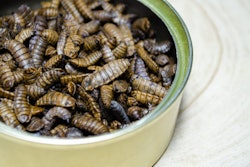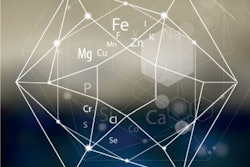
European feed association examines the future of feed at annual meeting
Local protein crops, conversion-free soy and the implementation of feed additives are some of the measures that the European feed sector can bring to the table to make farming practices in the EU more sustainable. It was all discussed at the recently held annual meeting of the European Compound Feed Manufacturers’ Federation (FEFAC).
Held on June 11 as an online edition, the annual FEFAC public meeting was titled, “Future Proofing Feed,” and focused on innovation in animal nutrition and its contribution to lower environmental impacts and the European Common Agricultural Policy (CAP) reform: new pathways for EU feed proteins.
Kicking off the meeting as one of the keynote speakers, EU Farm Commissioner Janusz Wojciechowski highlighted that the EU feed industry is — and has been —confronted with many challenges such as COVID-19, but also high raw material prices and feed costs, resulting in economic pressure on feed mills and farmers.
“I am closely following the situation and, despite the challenges, our EU agrifood and livestock sector has truly shown resilience and kept on supplying food in times of crisis. But the next challenge is fighting climate change,” Wojciechowski said. “While progress has been made to reduce the impact of agriculture on the environment, we have to do more and we have to do it now. The new European CAP policy will stimulate this and help farmers explore new opportunities. I highly value the proactive approach of the EU feed sector in taking actions.”
Move to conversion-free soy
The proactive attitude of the EU feed sector is reflected in the activities of FEFAC to support feed companies and farmers to become more sustainable. According to FEFAC, animal nutrition has a significant role to play to support the sustainable development of livestock and the agricultural economy to meet key global and European sustainability targets.
The day ahead of the online conference, FEFAC published the Feed Sustainability Charter Progress Report 2021. This publication contains an overview of FEFAC activities and deliverables from the past year in relation to the “five charter ambitions” on how the European feed industry can contribute to the development of more sustainable livestock and aquaculture value chains. Activities include increasing resource and nutrient efficiency and promoting responsible soy sourcing.
“A key milestone, included in this report, is the delivery of the upgraded FEFAC Soy Sourcing Guidelines in February 2021, which includes an operational solution to conversion-free soy sourcing,” said FEFAC president Asbjørn Børsting.
Soy that is sourced from regions with a negligible conversion risk of natural ecosystems and soy sourced under biome-based contractual agreements, e.g. Amazon Soy Moratorium, are generally considered to be ‘conversion-free’ soy origins.
“With these guidelines, companies can benchmark the various verification and certification programs on conversion-free soy and help them transform to more sustainable soy sourcing,” Børsting said.
Focus on local EU protein crops
A big topic at the FEFAC meeting was the EU’s new CAP reform, which is expected to include a simpler and more efficient policy that will incorporate the sustainability ambitions (Farm to Fork Strategy) of the European Green Deal. The future CAP reform is due to be implemented from January 1, 2023, pending final agreement between the European Parliament and the Council of the EU.
The new CAP provides several elements like voluntary coupled support, eco-schemes, rural development investment programs that can help boost protein production in the EU and reduce the EU dependency on protein-rich feed materials.
“There are different protein crops suitable to grow in Europe, such as fava beans, peas, lupins and rapeseed. But also the production of more clover, and alfalfa grasses that can be dried and concentrated for animal feed has potential in Europe. We have to make these crops more competitive to be a good alternative for soy,” Børsting said. “The big goal for plant breeders is therefore to increase the nutritional components and value of these “new” protein crops through new genomic breeding techniques.”
He continued: “This can increase the EU protein self-sufficiency as well as to help reduce the footprint of feed production. The good thing is that many feed companies are part of a bigger company that often have a crop breeding segment as well. We should encourage more cooperation on these plant breeding topics, both within large firms, but also through private/public and multidisciplinary partnerships.”
Simplify EU feed additive rules
The speakers at the FEFAC event also addressed that reduction of environmental emissions, as well as animal health and welfare, can only be accomplished when companies and farmers have access to the right tools.
According to Børsting, these tools include innovative animal nutrition strategies, including the use of feed additives that have health-promoting and methane-reducing effects.
“We already see very promising methane reduction additives hitting the market, some that can even reduce methane emission by 30%,” Børsting said. “And we need more of these animal nutrition solutions, as they can contribute significantly to reaching our sustainability goals.”
Speakers at the FEFAC meeting agreed that an efficient legal framework in particular for feed additives — less administrative burden, better market protection for applicants, new recognized functions for welfare and environment protection — together with possibilities to communicate to farmers on scientifically proven effects are preconditions to make these innovative feeding strategies available to farmers. However, acquisition of these solutions also requires investments at farm level, which farmers should be rewarded for and the benefits in terms of, for example, reduction of livestock emissions at individual farm level should be captured by models used by EU Member States for their emissions inventories.
Rise of more nutritional concepts
Eva Zamora, head of unit for animal nutrition and veterinary medicines under the directorate general for health at the European Commission, also said feed additives have a role to play in the transition to a more sustainable livestock sector, and revision of the feed additives regulation is being discussed.
“We have conducted an impact assessment and identified areas of improvement,” Zamora said. “We want to reach a more modern legislation, focused on stimulating innovation and feed additives that have a safe and proven effect on environment and welfare, a better procedure of authorization (speed up market access) and working on claims (how they can be better used). This is now under development.”
Mohamed Mammeri, Phileo‘s global program manager for ruminants, told Feed Strategy that the benefits of feed additives, such as yeast probiotics and postbiotics, are endless.
“When we look at dairy cows, we see huge potential to increase rumen efficiency and health, to not only increase the available energy for the animal, and hence increase milk production, but also to increase health and welfare, reduce nutrient losses and reduce methane emissions,” Mammeri said. “We see sustainable farming systems as a combination of things, such as economic viability for the farmer, high animal health and welfare, farm and animal efficiency, all with minimal use of antimicrobials and nutrient losses. Therefore, we do not focus on one thing or one nutritional product, but we work with farmers and nutritionists with nutritional programs, including a range of products, tailored to the customer needs and region. I certainly believe that use of feed additives will grow in the future, as they can really help in making farming systems more efficient and sustainable.”















